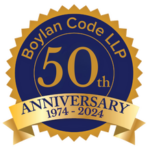By Mark Costello, Esq.
Friday June 13, 2003
The Daily Record
As an entertainment lawyer, I frequently am asked probing and important legal questions such as, “Where can I get a good snake tattoo?,” “How can I get $100,000.00 worth of new equipment free?” and “You have any Oreos in your desk? I missed lunch.” One thing clients usually do not ask about, but should know about, is public performance licensing fees. These licensing fees are collected and distributed to copyright owners (e.g., songwriters and music publishers) in the United States principally by ASCAP and BMI. Some clients have a rough idea how these organizations work, but some think ASCAP is the newest planet in the solar system and that BMI is an expensive German sports sedan.
ASCAP (The American Society of Composers, Authors and Publishers) and BMI (Broadcast Music, Inc.) control nearly all of the public performance licensing of recorded music in the United States. Although there are historic differences between the two organizations, those differences have blurred. (For example, you’ll find that artists such as Paul McCartney and Melissa Ethridge are members of ASCAP and Elton John and James Taylor license their music through BMI.)
What is a public performance copyright?
Federal copyright law provides that one may not publicly perform a copyrighted musical composition without the permission of the copyright owner. “Public performances” encompass a variety of things, such as:
- Radio stations playing music.
- Television stations playing music.
- Live concerts.
- Night clubs/bars with live or recorded music. (This includes jukeboxes!)
- Stores playing music over a central sound system. (Home stereo size — two speaker systems — played in stores are excluded.)
- Music on hold on telephone systems.
- Music in elevators.
As you can see from this list, the number and variety of sources where musical compositions are “performed” publicly is great. Given this, it doesn’t take a rocket scientist to figure out that you’d have to possess a divine omnipresence to police every performance of your musical compositions at any given moment at every corner of the earth. So along came public performance societies to license and police performances of copyrighted compositions and to collect and distribute license fees for the millions of licensed compositions.
What do ASCAP and BMI do and how do they do it?
Imagine your band, the “Disciples of Warts,” just signed a major recording and distribution deal with Sony/CBS Records. The Warts’ new video “My Baby’s Eyes are Blue and her Mucus is Green” is in heavy rotation on MTV, has crossed over to VH-1 and is getting airplay on rock stations around the country. Eighteen years later, classic rock radio stations around the country add your song to their play lists and you hear a Muzak version of it on the elevator going into your office each morning. Should someone be paying you? You bet.
At the time the Warts signed their deal with Sony/CBS, your manager or attorney should have had you join ASCAP or BMI (you cannott join both). As a member of ASCAP or BMI, you authorize them to license public performances of your compositions and to collect and distribute fees to you. The fees collected are distributed in accordance with a formula based on the number of public performances of any given song. Radio, television and commercially distributed music reels (e.g., Muzak) are factored into the equation, but live performances are not. License fees, however, are collected for live performances. If your band plays out but does not get any radio, television or music reel airplay, you will be generating fees for the royalty pot, but you will not share in the royalties distributed. If you are getting airplay, you may receive public performance royalties which, if the song in question is successful, could be substantial (e.g., in the tens of thousands of dollars). The thing to remember, however, is that a public performance royalty is paid to the owner of the copyright in the song (e.g., the songwriter and/or the publisher), not in the recording or performance of that song. So, if you cover a song and make it popular, the public performance royalties will be paid to the copyright owner of the underlying composition, not to you. (This law is subject to debate and could be changed in the near future to provide for royalties to performers, as well.)
The next time you are in a bar which has a jukebox or live music, look in the front window and you are likely to see an ASCAP and a BMI sticker. (A bar would have to have a license from each organization to play recordings of compositions licensed through either.) When you see those stickers, you will know that revenues are being generated for artists who are hundreds or thousands of miles away. Revenues are what drives this business (like any other commercial business) and public performance royalties are an important component in the revenue stream. Listening to records on your home stereo, however, still constitutes a private performance, so go home, grab a broomstick, strip down to your underwear and dance across the hardwood floor. Just like that old time rock and roll—it’s still free.
Reprinted with the permission of The Daily Record.


